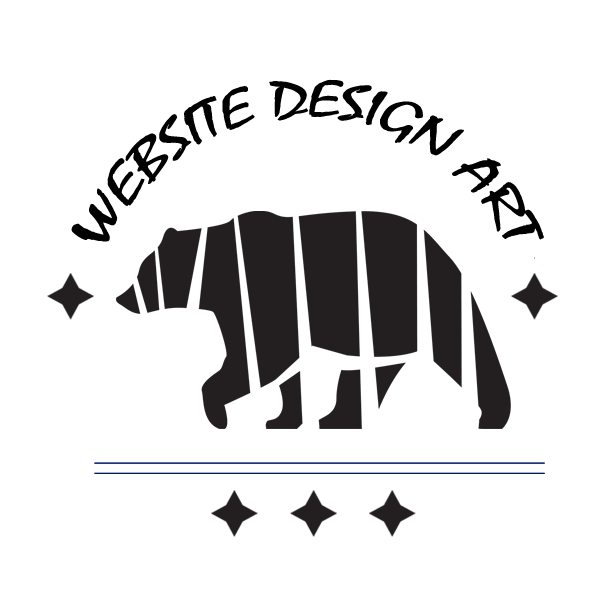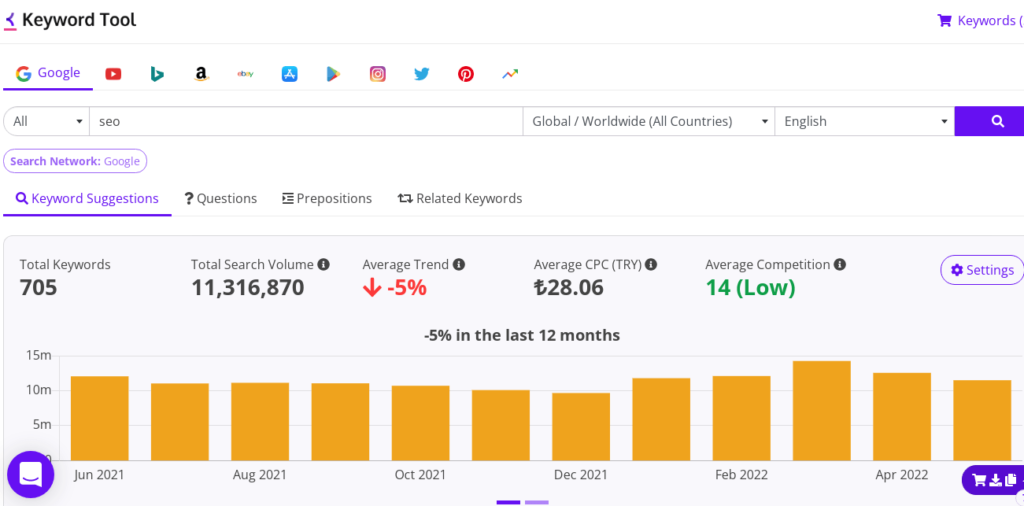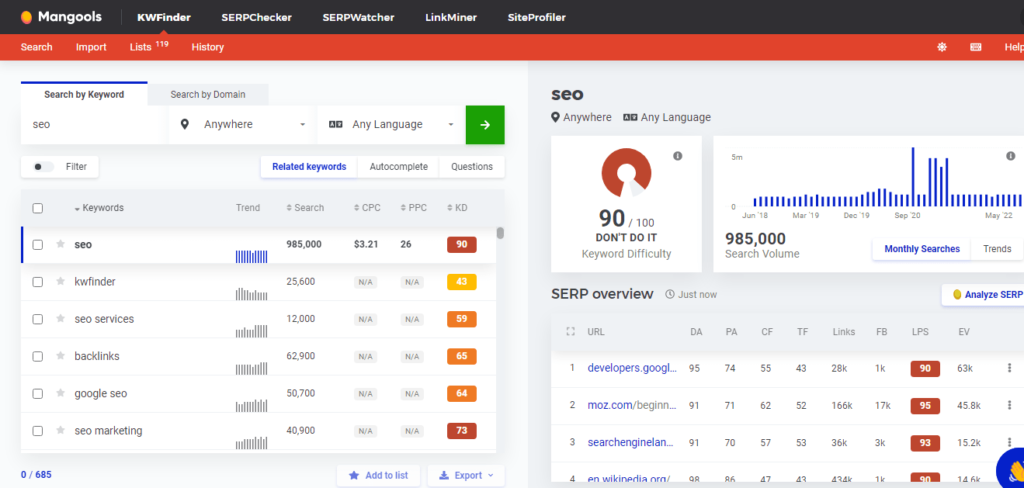
One of the most important steps of internal SEO is producing and publishing optimized SEO content on the site. In other words, if you strive to have high traffic and visits to your site, you should have enough information about SEO optimized content. Successful SEO optimized content is the one that can attract a lot of audiences or visitors and have an acceptable rank on Google. If you are looking for SEO optimized content, the dedicated and experienced Website Design Art team is always ready to help you. Here, they reveal some critical points about the basic tips of SEO optimized content.
What Is SEO Optimized Content?
SEO content writing meaning is part of the internal SEO of the site. As a professional expert at a Winnipeg web design company explains, there are lots of factors in internal SEO related to the content of our site. For example, we have a section called keyword research related to the content we are going to create for our site pages later.
Now, this content may be for an article on our site or a product page. In SEO content writing, we have to use some elements in the content inside the page, and some, such as writing the description, and internal and external links, are considered marginal items on the page. Remember that content with no rank on Google will never be seen. In other words, SEO content writing is the main factor or element to make your content valuable.
How Important Is It?
In general, the content that provides the necessary conditions for Google to understand your page better is called SEO content writing. In addition, the concerns and questions of the visitors should be answered in it.
The point to remember is that we should not optimize our content just for Google’s higher rank. According to Winnipeg SEO experts, what we must first think about is our visitors and then take any needed actions to make our content understandable for Google.
Most of the contents are produced to improve the site to a higher rank on Google. Freelance content writers usually write or produce merely SEO text. This is absolutely wrong.
In some contents, the main keyword is spontaneously repeated and bolded in each paragraph. This is a wrong action. Instead, we can focus on the key concept. In better words, it is better to use similar phrases and meaning instead of repeating the using keyword too much.
Another significant mistake is using phrases as related searches at the bottom of the search results and the ones that are related to the main keyword exactly one after the other without any creativity on the page, especially in the first paragraph.
Finally, the last point is that your content may be out of standard format and not very appealing to the user to read! All these mistakes in producing SEO text will eventually lead to the user or visitor being annoyed when reading your content.
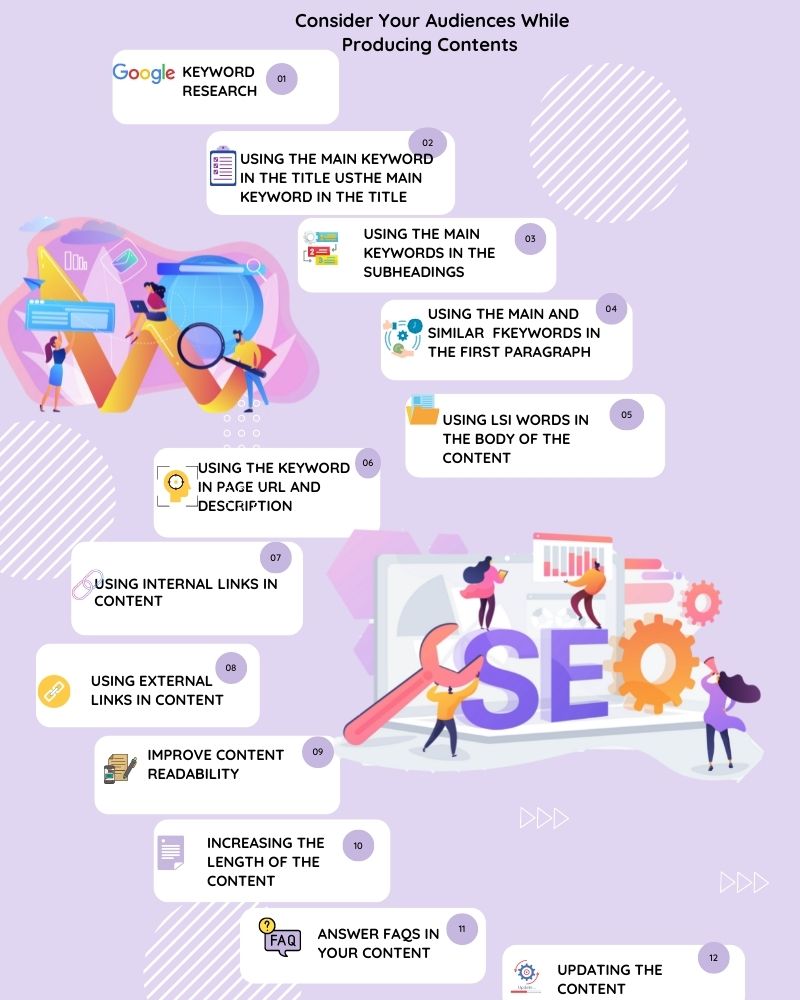
How to Write a SEO Content?
SEO content writing is more about textual content. Of course, it should be noted that article page content, category content, product page content, service page content, and specific landing page content all are various content models on the site. There is almost no difference between them. In other words, any content on the pages of your site probably can lead to getting a high rank on Google. Generally, there are some basic and important steps to do SEO content writing.
So to write a SEO text , we have to go through some steps that will be explained in detail in the following.
Keyword Research as the First Step in SEO Content Writing
When it comes to website design, some believe that when keyword research is done in the SEO strategy development phase, it is enough. But professionals know that it must also be done again to produce content. In other words, while writing the content of the page, finding a series of similar keywords and using them in the content of our page is a significant part. As a professional, you should know what your users like to know when searching about a specific topic on Google. You should know how do they search? You should know if they search for the exact same keyword or use similar words and synonyms? This is the comprehensive process of keyword research. Some prefer to take advantage of the existing tools in keyword research. But there is a point to consider: These tools only show the main keyword or up to 5 phrases similar to the main keyword. It is not enough. If you strive to understand the user’s intentions, you have to do a little more research.
There is a keyword, and you need to find a series of longer phrases and sections related to your keyword. Besides, some main expressions similar to the original concept, called LSI, should be found. And to do this, Google is the best tool. When you do a Google search for your keyword, a number of similar phrases that people have searched for and have a high search can be found. If you use these phrases in your content, which are usually similar questions of people about that particular topic, it is highly possible to be ranked in similar phrases. There are other tools like Keywordtool, Kwfinder, Google Keyword Planner that you can use to check and find similar keywords.
A View of Keyword Research Tool “Keywordtool.io”
A View of Keyword Research Tool “kwfinder”
Where Should We Use Keywords in Content?
In general, we should use the main keyword and other similar and related keywords in different parts of the content. Page’s URL, main page title, in-page subheadings, the main body of content, and description should include the main keyword and other similar phrases.
Using the Main Keyword in the Title
One of the most important SEO text factors is using a keyword in the title and H1 tag. Putting the main keyword in the title of the page will help Google a lot in understanding the main concept of the page. Of course, this is only the beginning step. You need to do other actions to help Google understand your page’s content.
You can use the main keyword and the second keyword for the page’s title. These two usually have a high search on Google. For example, the title “Increase site visit; 8 ways to increase site traffic in the new year “has two main keywords, namely” increase site visit “and” increase site traffic. “
Using the Main and Similar Keywords in the First Paragraph
The first paragraph of the textual content has always been significant. In other words, both the user or visitor and Google must know what you are going to talk about. That’s why we have to use the main keyword, the second keyword, and phrases similar to the main keyword very creatively. You should be creative to be successful. In the previous example, the phrase “increase site visit” or “attract real traffic” are similar phrases to increase site traffic that you should use in the first paragraph of your text.
Using the Main and Similar Keywords in the Subheadings
Another part where you can use keywords and similar words to your main keyword is subheadings on the page. For example, in the H2 and H3 tags, you can use the main keywords along with the multi-part words. Consider the following topics:
New methods to increase site visits (H2 tag)
Increase site traffic by updating old content (H3 tag)
Increase site traffic with internal linking (H3 tag)
Note that instead of repeating the main keyword too much, you can use the same, multi-part, and related keywords and phrases with a bit of creativity in different parts of the content, especially the headlines, in a way that is attractive to the user. And also, it should be meaningful and understandable to Google.
Using LSI words in the Body of the Content
LSIs are not considered keywords. They are similar words and phrases related to our main keyword. For example, suppose we are talking about SEO content writing. In that case, topics such as keyword research, internal and external linking, title writing, writing the first paragraph and summary, punctuation marks, etc are topics similar to SEO text, and talking about them helps Google understand that we’re talking about SEO text.
Using the Keyword in Page URL and Description
The page URL is another section where it is best to include the keyword. You should make sure to use the main keyword in it. Also, the presence of the main and similar keywords in the page’s description is mandatory.
Having Internal Links in Content
You need to use internal linking to create meaningful communication on your site. Using internal links is actually creating links between the related pages of your site so that both your visitors can access the linked pages and Google can also understand the concept between pages. It is better to create internal linking of the site with anchor texts related to the keyword of the intended page. When you do this, Google crawlers will have a better understanding of the content of the linked page.
The number of internal links on the page does not matter! But try not to increase the number of internal links on the page and use it only for better access and creating a semantic connection between the pages. Related SEO articles and mentioning them between paragraphs and at the bottom of the page are also considered internal links on the page.
Having External Links in the Content
In addition to internal linking and linking between pages, sometimes it is necessary to link to pages that are outside your site (external links). Of course, linking to off-site (other sites) usually happens in site articles.
External link building is generally done to help users better understand the topic and increase the credibility of your article.
Sometimes you may talk about a topic that you do not have more information about on your site. That’s why you refer your users to the source, which is another site. Also, your article may be very comprehensive and full of resources. It is best to cite the sources here as well. This will increase the credibility of your article with Google.
Improving Content Readability
Just writing correctly and without mistakes is not enough! You should care about your readers. You should write in a way that readers enjoy it. There are many elements of content readability, and the most important ones are explained below.
Use short sentences. To do this, try to use more semicolons and commas.
Shorten paragraphs. Try to use more Inter. The shorter the paragraphs, the more the reader is encouraged to read your content.
Use more headlines in your content. Try to shorten your content sections by using headlines and subheadings.
Try to keep the content at the bottom of the headlines the same size. It should not be too short and not too long! If you feel it gets too long, use another subheading.
Know where to use punctuation in the right place. Using punctuation, in addition to increasing the readability of the content, will help you bring together more keywords and phrases.
Sometimes you can use bolts to make your SEO text more attractive.
Use drop-down lists and anchor links for headlines. By doing this, you can refer the audience to exactly the part of the content they need. For example, your audience is looking for a specific topic in your content. Clicking on the title will refer them directly to the same section of the page.
Finally, if you strive to make your content more attractive, you can ideally use a series of elements related to the template of your site. For example, highlight the important part of the SEO text.
Optimizing the Visual Content Inside the Page
Visual content refers to images and videos, the use of which on the page greatly helps to make the content more attractive and increase the retention of the audience on your site.
For SEO images, it is necessary to observe the following points:
Be sure to include the names of the images associated with it.
Reduce the size of the images but keep the quality high.
Do not use duplicate images.
Try to make the images by merging multiple images or adding a series of elements.
Be sure to use related keywords in the toolbar tag.
Follow the same tips for SEO videos. First, the quality of the SEO videos should be high and, at the same time, reduce their volume as much as possible. Handbrake software is the best option to reduce the volume of SEO videos without compromising the quality.
Use the title tag for in-page videos. This means that the same video that you put under the H2 or H3 tag is the title for your SEO videos. Be sure to include a paragraph as a video description below the title tag for your video.
It is better to upload videos on your host, and be sure to use a standard player like Jwplayer to display videos on your site.
Should we Write Long Content?
As experts explain, long form content works in many cases. Long form content is one of the factors through which Google can find out that your content is more complete than your competitors. It has been seen many times that long SEO articles, even without backlinks, have taken a good rank in Google.
While content lengthening often has a better chance of getting a better ranking on Google, remember to respect your audience. Do not lengthen the content. Do not stretch the issue unnecessarily under the pretext of using more related and similar key phrases!
The first thing you can do is to check the content of the competitors. For example, in the topic, you want to produce content, see the top 10 sites in search results. What is the average length of their content? No matter how long they are, you can write at least 300 more words.
Answer the Frequently Asked Questions in Your Content
When we produce content, we are actually answering a number of questions that are on the mind of the audience. All the headlines you have read so far in this article were the questions our specialists answered about SEO content writing.
Even if it is not an article and we only have one service description page, we will still answer the frequently asked questions in the customer’s mind on that page. For example, if we provide services, we must explain to the customer about its material, quality, price, support and after-sales service, how to use it, etc.
In addition to the questions that we ask and answer in the body of the article, we must write a series of frequently asked questions at the end of the article and answer them. It is better to use related searches and user questions on Google. For example, see the following image:
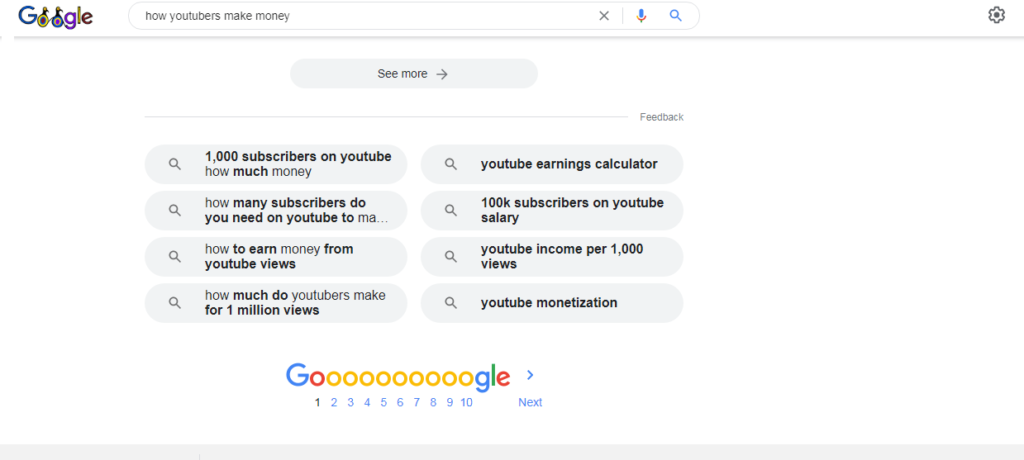
Given these searches, we can ask these frequently asked questions:
What is the legal ruling on making money from YouTube?
Is It Possible to Make Money from Youtube Without Making A Video?
How Much Money Do Each 1000 YouTube Views Make?
This greatly affects the ranking of your page in multi-part phrases and people’s slang searches.
Do Not Forget to Update the Content!
One of the most important parts of SEO content is to update your content after a while. Google is very interested in the content that is being updated. Content updating is a good strategy to increase the ranking of your pages on Google. The best way is to use an incomplete content publishing strategy.
In this method, for example, you have written a three-thousand-word article and are very comprehensive with all the principles of SEO content writing. Instead of publishing the whole thing from the beginning, you only publish the first thousand words. Then after two months, you post another thousand words, and after another month, the rest of it.
Even the comments that are posted on the page will update your content. Ask your audience to comment for you. Of course, it may be a little difficult to persuade them!
Consider Your Audiences While Producing Contents
Your content should be engaging, compelling, and understandable to your audience. Apart from the elements that make the content attractive, your subject matter and narrative in the content are also important. No one likes boring content! Content storytelling makes the content look more engaging. Stories are a powerful tool for educating and encouraging the audience to read the full content. You need to create a story based on your content. This means, for example, that you need to gather all your experience related to the project you are working on.
Now, if you are not familiar enough with the project you have started, how can you make a story based on it? You can use stories that your friends or customers, or even competitors and others have told you. Any related story can make your content compelling and readable. So do not forget to produce content that is not for Google but only for your audience.
The Final Words
In this article, our experienced and dedicated experts tried to teach you any valuable points related to SEO content writing. Following these mentioned tips helps you create SEO optimized content. Besides, working more in this field will give you more experience. So, practice more and more. As a well-known website design company in Winnipeg, we take pride in coming to your aid if you need help with your website design or optimizing your SEO content. Besides, if you desire to get more information about the related topics with website design and optimized search engines, you can look at our other articles.
· Golden Rules for Writing Fantastic Educational Content for Your Website
· 6 Techniques to Improve Google Ranking
· What Is Search Engine Optimization (SEO)?
Normal
0
false
false
false
EN-US
X-NONE
AR-SA
table.MsoNormalTable
{mso-style-name:”Table Normal”;
mso-tstyle-rowband-size:0;
mso-tstyle-colband-size:0;
mso-style-noshow:yes;
mso-style-priority:99;
mso-style-parent:””;
mso-padding-alt:0in 5.4pt 0in 5.4pt;
mso-para-margin-top:0in;
mso-para-margin-right:0in;
mso-para-margin-bottom:8.0pt;
mso-para-margin-left:0in;
line-height:107%;
mso-pagination:widow-orphan;
font-size:11.0pt;
font-family:”Calibri”,sans-serif;
mso-ascii-font-family:Calibri;
mso-ascii-theme-font:minor-latin;
mso-hansi-font-family:Calibri;
mso-hansi-theme-font:minor-latin;}
